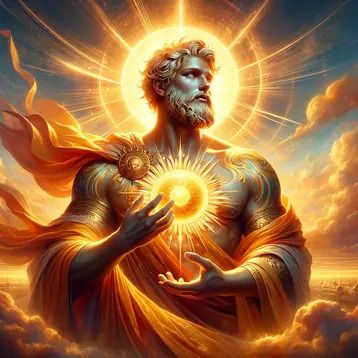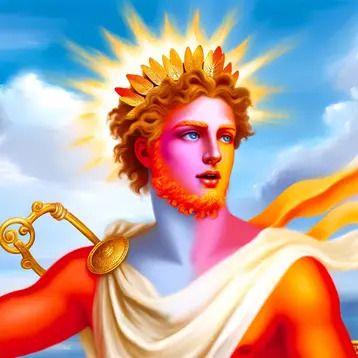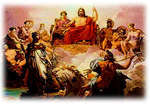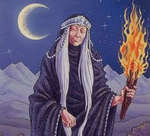
Selene
Selene :: The Titan Goddess of the Moon
In Greek mythology, Selene held a vital role as the personification of the moon. As a Titan goddess and the daughter of Hyperion and Theia, she was an essential figure in the celestial hierarchy, illuminating the night sky and governing the lunar cycle.
Family and Celestial Kinship
Selene was closely associated with her siblings, Helios, the sun god, and Eos, the goddess of the dawn. This trio of deities represented the daily cycle of celestial bodies, with Selene's moon following her brother's sun across the sky.
Selene's Role and Symbolism
As the goddess of the moon, Selene was often depicted driving her moon chariot across the heavens. Unlike her brother Helios' golden sun chariot, Selene's chariot was silver, drawn by two snow-white horses. This imagery symbolized the cool, reflective light of the moon as opposed to the bright, direct light of the sun.
Selene's connection with Artemis and Hecate, other lunar goddesses, further emphasized her lunar attributes. While Artemis represented the crescent or waxing moon and Hecate the waning moon, Selene was often considered the full moon, embodying the moon's complete illumination and its effects on the earth.
Selene and Endymion
One of the most romantic and well-known myths of Selene involves her love affair with Endymion, a mortal. Enamored with his beauty, Selene watched him sleep eternally, a condition granted by Zeus that allowed him to remain ageless and deathless. This story is often interpreted as a metaphor for the moon's nightly visitation of the sleeping earth.
Selene's Offspring
Selene's liaison with Zeus resulted in several children, each embodying different aspects of the night or the moon's influence. These offspring included Pandia, Ersa, and Nemea, along with a possible connection to Dionysus, although this may stem from a confusion with Semele, another of Zeus's mortal lovers.
Legacy of Selene
Selene's presence in Greek mythology extends beyond her physical depiction, symbolizing the serene beauty of the night sky and the passage of time marked by the phases of the moon. Her story has inspired countless works of art and literature, cementing her role as a timeless symbol of the night and the gentle radiance of the moon.
See Also: Titans, Hyperion, Theia, Helios, Eos, Artemis, Hecate
Selene Q&A
Link/Cite Selene Page
Written by: The Editors of GreekMythology.com. GreekMythology.com editors write, review and revise subject areas in which they have extensive knowledge based on their working experience or advanced studies.
For MLA style citation use: GreekMythology.com, The Editors of Website. "Selene". GreekMythology.com Website, 30 Nov. 2023, https://www.greekmythology.com/Titans/Selene/selene.html. Accessed 25 April 2024.






